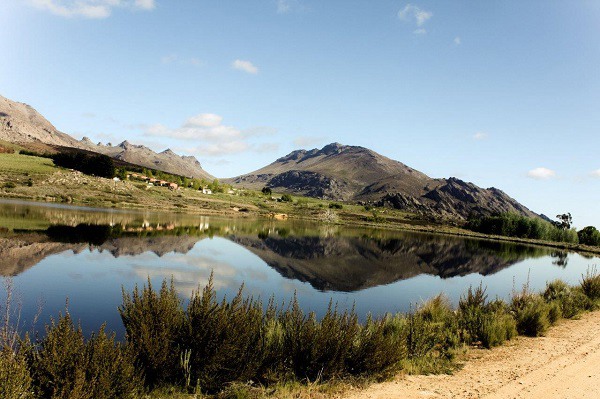The Western Cape is receiving larger amounts of summer rainfall than usual just as the Department of Water and Sanitation has notified the public that the average level of Western Cape dams has fallen below 50%.
“The rain is very welcome for apples and pears,” says a Ceres-based pomefruit technician. He adds that it is markedly less welcome on unharvested stonefruit and in the table grape vineyards, but the majority of apple and pear farmers currently don’t have enough water, he says, and they welcome the rain.
The Western Cape Department of Agriculture has noted that the current dam levels are significantly below last year’s 65% at this point of the summer.
The Royal Harvest harvest is almost done, to be followed by Golden Delicious.
“There are many areas where farm dams are about empty. Water remains tight in the Western Cape – we wish we could get some of the rain falling in the north of the country. Water and access to is a deal-breaker for the success of farms and it’s part of the sifting process that’s ongoing in the industry as a result of two difficult year, prices, logistics and the war in Europe.”
 Farm dam in the Koue Bokkeveld
Farm dam in the Koue Bokkeveld
The impact of the hail in the Koue Bokkeveld will become clear through out the season on crop that are still hanging; FreshPlaza was told of apple and pear orchards where crops were fully wiped out.
Jacques du Preez, general manager for trade and markets at the deciduous fruit umbrella organization Hortgro, says that they reckon a loss of between 80,000 and 100,000 tonnes of apples from this area.
In the Witzenberg Valley some farmers will pack basically nothing for the fresh market, instead sending the whole crop for juicing. Juice factories are oversupplied with pomefruit as a result of the hail.
An apple orchard in the Koue Bokkeveld in usual summer weather
Downturn in the fortunes of Packham pears
The pear harvest has also commenced with, a pomefruit exporter tells FreshPlaza, “terrible” packouts on Packhams pears because of the wind.
“There is a lot of wind damage on Packhams. It’s been a long time since I’ve seen such poor packouts as we’re seeing on Packhams at the moment,” he remarks. “There’s definitely more wind than other years.”
He says the extent of wind damage is such that some blocks of Packhams aren’t fit for local fresh sales, but will have to be sent for processing.
He continues: “Packhams is a big cultivar in the South African industry. It’s been everywhere planted and it makes up a significant part of every pomefruit farmer’s basket, but I don’t think it’s going to do well this year.”
However, not all pear producers agree that there is a particularly high incidence of wind damage on Packhams this season. It is very early on in the harvesting season, a Grabouw-based technical advisor points out. With little data, he says, it's too early to tell if this is an unusually poor year for Packhams.
Packout percentages are also reduced by the decrease in exports of Packham pears. It has become too expensive with packaging and shipping costs to export class 2 Packhams to places like Russia, for example. The market for a normal EU1 spec Packham has dwindled, exporters say.
Packhouses now select only a high quality Packhams, packing for the Far East: Indonesia, Malaysia, India and to an extent still Hong Kong.










